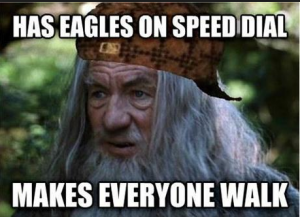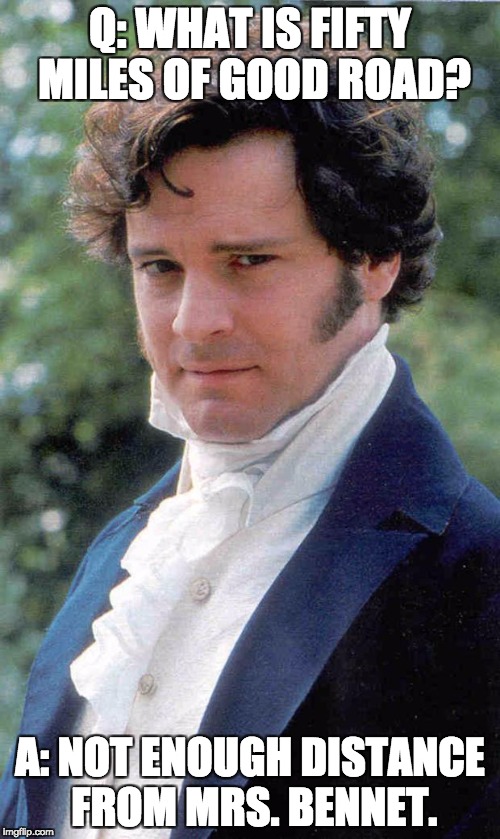
It’s Squatter’s Rights Wednesday with me, Cait Reynolds. Today, we are going to go the distance. Literally. No matter what genre we write, our characters generally go places. The physical distance between these places impacts the timelines of our stories, pacing, and tension. Distance, great or small, can also be used to create atmosphere or to illustrate differences between characters.
But, before we get too much farther (ha ha, pun fully intended), here is the requisite photo of Denny Basenji, who is determined to go nowhere and do nothing.

GPS, Equipages, and Transporters
Like I said, it doesn’t matter what genre we write. Every story takes place in a…well…place. Whether it’s another planet, a fantasy realm full of dragons, Regency England, or today’s Los Angeles, distance plays a part in shaping and defining the story.
Let’s tackle the easy stuff first. When we write about anyplace on planet Earth, all we have to do is use Google Maps to get a sense of location, geography, nearby locales, and distance (by planes, trains, and automobiles…and bikes and feet).
I generally keep a little written note of the locations in my story and how far from one to the other. It’s quick a quick reference guide for me as I write, and it eventually helps my editors and proofreaders ensure consistency.
Staying on planet Earth but going back in time, we are still dealing with the same locations (for the most part), so Google Maps is still our friend.
However, now, we have to add in another layer: transportation. Whether it’s a pilgrimage on foot, the complex transportation logistics of a Crusade, taking the carriage to the ball, or crossing an ocean or continent using steam-powered engines, the way our characters get places must be factored into the overall timeline and plot.
But…how exactly do we figure out how long it would have taken a farmer’s cart with two old horses to go twenty miles versus a smart little phaeton with a pair of bright, brisk ponies?
Ah, hello, Google, my old friend. I’ve come to talk with you again.
No, seriously, you can google that stuff. It might take a little bit of digging (depending on how complex the logistics or how detailed you want to get), but the information is out there.
To prove my point, I just typed in, “average travel speed by phaeton and ponies” on Google and came up with a wealth of information about travel speeds and terrains (in both miles and kilometers!). If I really wanted to nail the exact amount of time it would take Mrs. Gardiner from Pride and Prejudice to go around the 10 miles of Pemberley’s Park in the phaeton, I would probably spend about twenty minutes to half-an-hour digging through Google results.
For science fiction and fantasy, we get to create the rules, but then, *sighs* we then have to play by them. We can create any alien planet or mist-ringed elven realm we want, but as part of basic world-building, we must actually build the world.

Look at classics like Dune and Lord of the Rings. Herbert has very specific rules and details about space travel and distance between Fremen enclaves on Arrakis. In LOTR, Tolkien provides perhaps the most perfect example ever of using geographical distance to create tension and manipulate the pacing of the plot.

For science fiction, it’s worth doing a little Google, Wikipedia, and science magazine website digging to get a basic understanding of the distances between planets, solar systems, and galaxies – and, how long it takes to travel between them in lightyears. Keep a list of every space station, planet, and outpost, and their distances from each other.
We can talk about warp engines and wormholes all we want in science fiction, but we need to keep it consistent. If we get our characters into a situation where the only way out is to go to warp 10, but the scale only goes up to warp 9.9 (looking at you, TNG *wink*), then, we can’t just wave a magic wand and have the raven-haired, emerald-eyed, 22-year-old engineering ensign with a tragic past suddenly come up with a way to achieve warp 10.
This is a direct violation of Lamb’s Law of Coincidences: You can use all the coincidences you want to get characters into trouble, but you can never use it to get them out of it.
In fantasy, the same rules apply. I would even go so far as to draw what I like to call a “stick-figure map.” That’s a polite way of saying a bunch of blobs and dots on a piece of paper with arrows between the dots indicating distances between cities, kingdoms, continents, etc.
Magical transport needs rules, just like sci-fi transport. Treat dragons like horses: how fast can they fly, for how long, are there different types of dragons that go at different speeds?
Personally, all my dragons come with a V8 standard.
Polite nothings about the roads and the weather.

Conflict! 😀
“It must be very agreeable to her to be settled within so easy a distance of her own family and friends.”
“An easy distance do you call it? It is nearly fifty miles.”
“And what is fifty miles of good road? Little more than half a day’s journey. Yes, I call it a very easy distance.”
“I should never have considered the distance as one of the advantages of the match,” cried Elizabeth. “I should never have said Mrs. Collins was settled near her family.”
In this example from Jane Austen’s Pride & Prejudice, distance and travel are used to highlight the differences between Elizabeth and Mr. Darcy’s wealth, social status, and character. It’s just one of the many brilliant examples of “show, don’t tell” in the book, but that’s another post for another time.

When I was writing a scene about the journey of one of the characters in Kristen’s and my zombie western, I did spend more time – probably close to an hour – learning about railroad journeys from the East Coast to Arizona territory in the 1870’s-1890’s. This was much more involved for several reasons.
First, based on the exact year we are using, I needed to find out just how far the westward railroad expansion went. I discovered that while there was service to California already, the first tendrils of track had just begun to breach the borders of Arizona.
Therefore, the character would have had to end his rail journey a good 200 miles from his destination and take a stagecoach the rest of the way.
The time I spent researching this was not wasted, and not just for the fact that I was assuring that my facts were correct (socking it to the trolls!), but I realized how much this particular journey would represent abandoning civilization for the character, and it also gave me an opportunity to add in a hint of backstory for his relationship with another character whom he meets at a hotel in Denver when he is making arrangements for the next stage of his journey.
The failure, shortcomings, and limits of transportation provide us with fantastic tools for ratcheting up the tension.

Not to bring up bad memories of math class for many of us, but if character A is 60 miles away and trapped with a bomb set to go off in an hour, and character B can only travel 30 miles-per hour, what is going to happen to character A? (Leave your answers in the comments! Bonus points for creativity and flash fiction LOL.)
***
I love hearing from you!
For the month of September, for everyone who leaves a comment, I will put your name in a hat. If you comment and link back to my blog on your blog, you get your name in the hat twice. What do you win? The unvarnished truth from yours truly. I will pick a winner once a month and it will be a critique of the first 20 pages of your novel, or your query letter, or your synopsis (5 pages or less).
NEW CLASSES FOR SEPTEMBER AND MORE!
All classes come with a FREE recording!
We’ve added in classes on erotica/high heat romance, fantasy, how to write strong female characters and MORE! Classes with me, with USA Today Best-Selling Author Cait Reynolds, award-winning author and journalist Lisa-Hall Wilson, and Kim Alexander, former host of Sirius XM’s Book Radio. So click on a tile and sign up!
(If you are getting this via email, open the blog post to see all the options and sign up!)
[abcf-grid-gallery-custom-links id=”22482″]








17 comments
1 ping
Skip to comment form
Sadly, character A is going to see first hand what an explosion looks like, unless that raven-haired emerald-eyed ensign with the tragic past happens to be around. 😉
Author
Oh, Elizabeth, the emerald-eyed ensign is unfortunately busy devising a plan to single-handedly outwit an alien overlord and his battalion in order to rescue her kidnapped baby sister and reclaim the lost throne of Spoofus 5.
Bitsy (also known as Bitchy) Character laughed uproariously. Her silly sister, Annorexic (also known as Ann)Character, had been gullible enough to follow the treasure map to the “X,” which, sorry to say (not), marked the bomb. Too bad. So sad. Bitsy laughed as she pushed the accelerator on the pink plastic Barbie car and headed merrily over the hill to hang out with Ken Hunk, Ann’s soon-to-be-former fiancé, at his mansion 30 miles away.
Author
The only doubt in Bitsy’s mind was whether she should have taken the Ducati in order to get to Ken’s faster…
Ah, but she knew she now had all the time in the world…
Um… Mr Darcy is discovered to secretly be a Time Lord! He swoops in to save A from the bomb, which tragically slips from his grasp as he passes over Mrs Bennet’s carriage, which is toiling along toward Pemberley?
Although TBH I can think of three other characters who might well need bomb-related accidents in their vicinity… (Pauses to sing “I’ve Got A Little List” – and they’ll none of them be missed!)
Thanks for the “stick-figure map” concept – I drew one of those for Restoration Day but there is no way on earth I would ever let anyone else see it. I can’t draw for toffee!
Author
Someday, I will share the stick figure storyboard I did of an action sequence that involves killing a zombie goat. TBH, the horns kind of look like antennas (if antennas look like two twigs sticking out of a circle). Oh, and Mr. Darcy is TOTALLY a Time Lord! Why do you think he’s so grumpy all the time? Inter-dimensional jet lag is a total bitch!
Road conditions and vehicle matter too… I just spent an hour or more researching the road between point A and point B (it’s little more than a gravel path for forty miles) that my MC must travel on her motorcycle. Her bike quickly became a dual sport, and I made quite sure that a motorcycle of this type could cover the rough terrain. Why? Because if I make it a Harley softtail, somebody in BC is gonna pipe up with “I know that road, it’s dirtbike territory, that bike won’t make it,” and then I have lost my audience.
Author
Exactly! It’s amazing how the smallest of things can fracture the reader’s suspension of disbelief. And fun fact – my uncle races motorcycles. I don’t know which ones he has right now, but I know back in the 80’s and 90’s, he used to commute to work in San Francisco on his Motoguzzi and Ducati 😀
I went through these distance problems during my first draft. I looked up the time it took to travel by stagecoach, covered wagon, and for those who have walked across America.
Google is definitely a quick problem solver.
Author
It’s amazing to think how long it took to get places and challenges us to put ourselves in a very different mindset about the concept of distance.
McGyver is just 28 minutes away when he intercepts A’s distress signal (thanks to the shiny diamond on her pinky). 118 seconds later McGyver successfully disarms the device with tweezers and an ice pick left in the pocket of a jacket he’d worn in last week’s episode.
I particularly liked your idea of a map with all the distances labeled, though I wouldn’t share it with my editor or proofreader. If they can’t get the picture from my writing, readers won’t either. Better do some revisions. I especially liked the idea of using the physical distance to create an opportunity to show some character development or expose backstory or do anything else the story might need. Thanks for the tips
Author
You had me on the edge of my seat, rooting for McGyver!!! Lol. I can see why an editor might need to “see” the map in your writing first. It’s a good point. I’d still give the map to the proofreader because they are looking for consistency and double-checking more than concept or craft, and I like making their job easier 🙂
I like the idea of introducing a plot turn as a result of using public transit. My historical fiction uses railroads and streetcars as a primary means. A random fellow-passenger helps Anna, and a relationship begins.
Oh, and that unfortunate character A will not need to worry more than a half hour about being saved. The speed of B is half what it needs to be. (And there’s a link from my website to your article).
And so Bertram knew that the half hour that remained would not bring Anna to the Monroe depot in time to prepare for the fish fry. The timetable said the express only ran on Mondays. Bertram wondered what made her journey with Joe so sudden they’d leave on a Friday. He couldn’t contain the explosion of gossip that would rise up in the church basement.
You said:
“…get a basic understanding of the distances between planets, solar systems, and galaxies – and, how long it takes to travel between them in lightyears.”
A lightyear is a measure of DISTANCE, not time. This might come across as nit-picking on my part, but confusing a lightyear with time spent is increasingly common. Maybe inconsequential to most writers, but not those aspiring to write sci fi. How long it takes to travel between planets in the sci fi writer’s created world depends entirely on the level and kind of technology they build into it, but they’ll continue to measure the time spent in hours/days/years.
Character A dies because character b would take 2 hours to get there. Character A has to find the third option and think.
[…] https://authorkristenlamb.com/2017/09/there-back-again-using-distance-to-up-the-story-stakes-and-pace… Use google to check your distances. […]